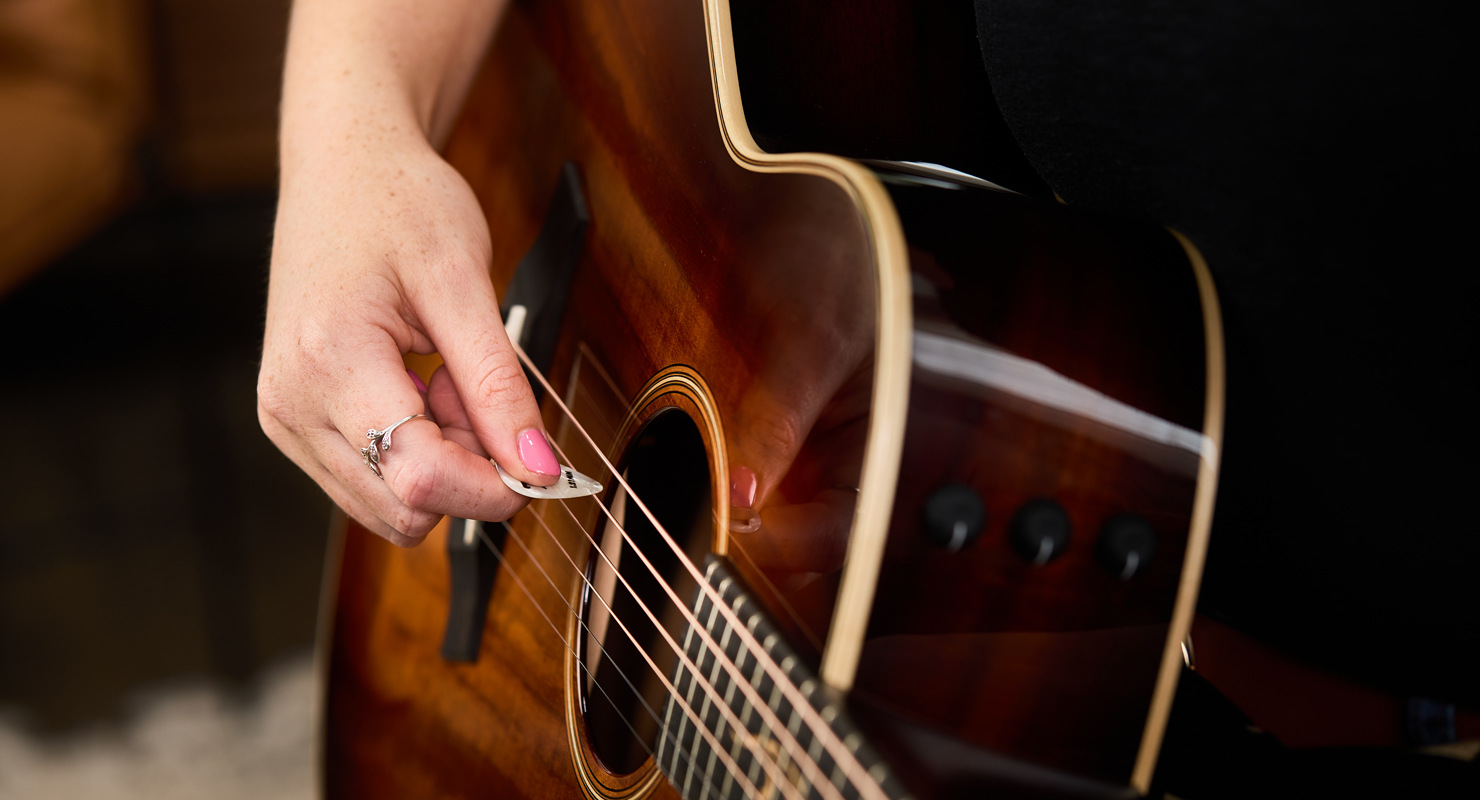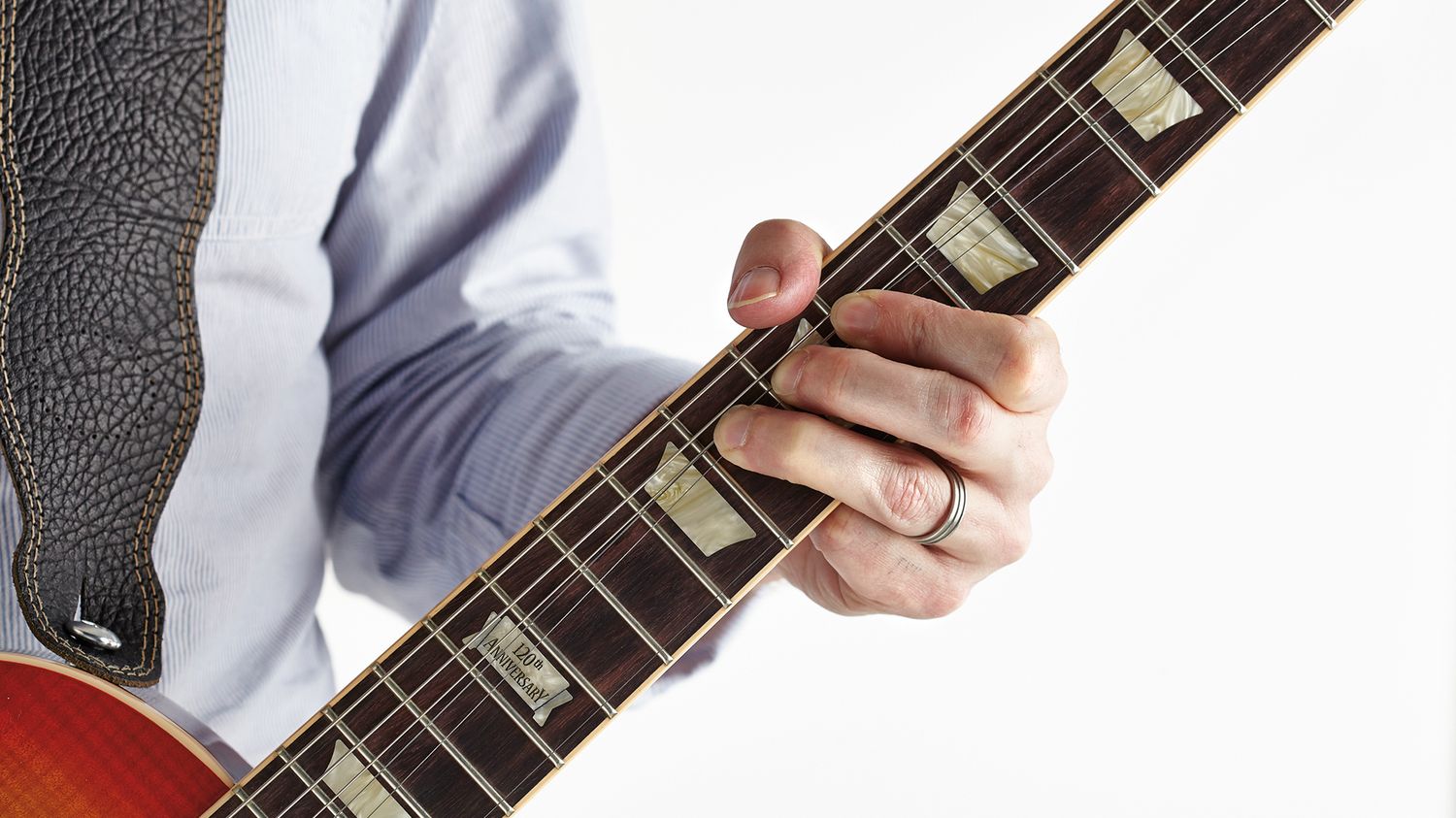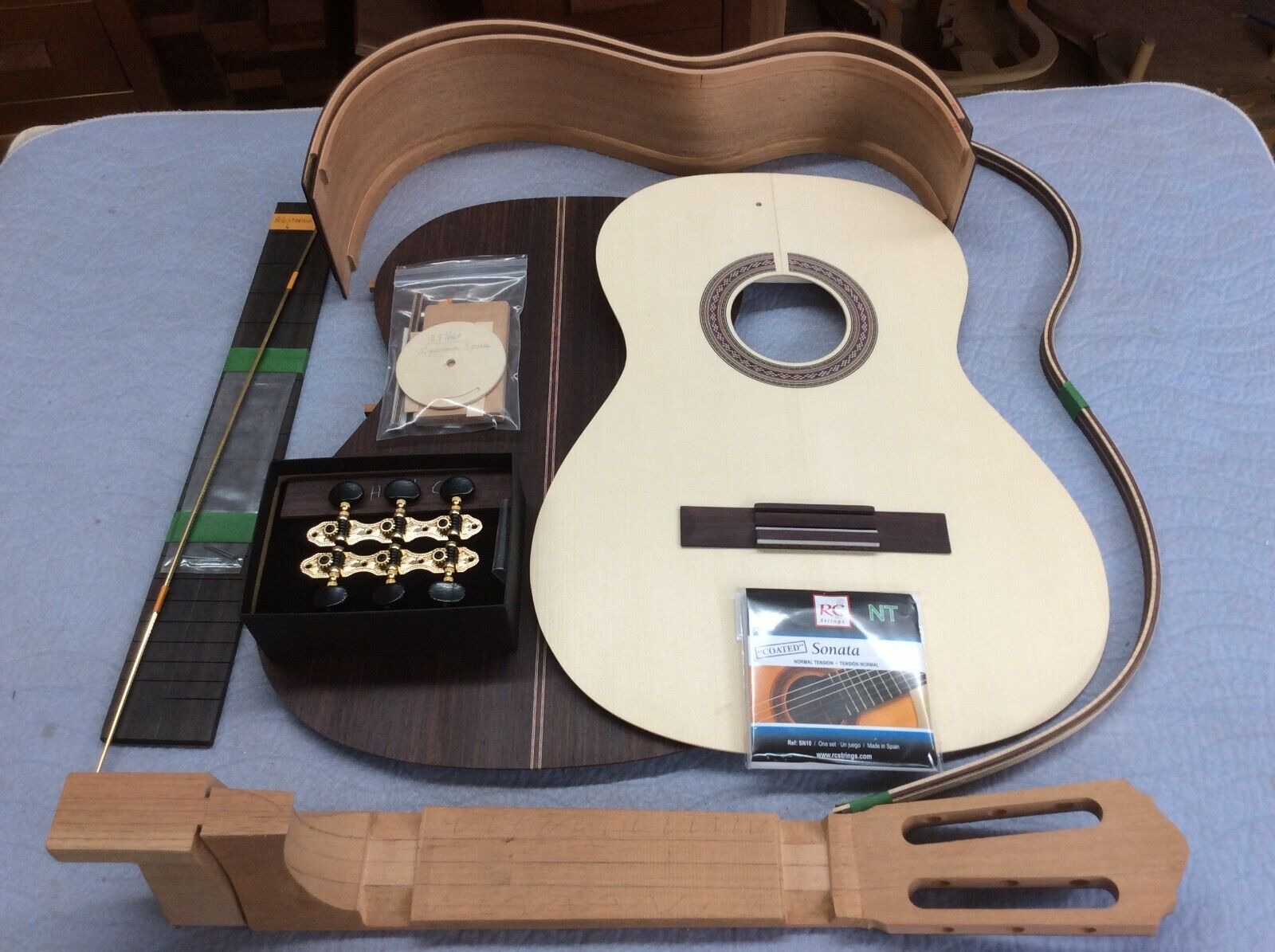Home>Instruments>Guitar>How To Properly Strum A Guitar


Guitar
How To Properly Strum A Guitar
Modified: February 15, 2024
Learn the proper technique for strumming a guitar with our step-by-step guide. Master the art of guitar strumming and improve your playing skills today!
(Many of the links in this article redirect to a specific reviewed product. Your purchase of these products through affiliate links helps to generate commission for AudioLover.com, at no extra cost. Learn more)
Table of Contents
Introduction
Welcome to the world of guitar strumming! Whether you’re a beginner picking up a guitar for the first time or an experienced player looking to refine your strumming technique, mastering the art of strumming is essential for creating beautiful music on the guitar. Strumming is not just about hitting the strings; it’s about rhythm, dynamics, and expression. In this comprehensive guide, we will explore the fundamentals of proper guitar strumming technique, from holding the guitar to executing basic and advanced strumming patterns.
Learning to strum the guitar effectively is like mastering the heartbeat of a song. It sets the rhythm, drives the music forward, and adds depth and emotion to your playing. Whether you aspire to play gentle acoustic ballads, energetic rock anthems, or soulful blues tunes, understanding how to properly strum a guitar is the gateway to unlocking a world of musical possibilities.
Throughout this guide, we will delve into the nuances of hand positioning, explore various strumming patterns, and uncover common mistakes to avoid. By the end, you will have the knowledge and confidence to strum the guitar with precision, fluidity, and soul.
Understanding Guitar Strumming
Before diving into the physical aspects of strumming, it’s crucial to grasp the conceptual foundation of guitar strumming. At its core, strumming involves sweeping or plucking the strings with a pick or fingers to produce a rhythmic and melodic sound. This rhythmic motion is what gives life to the music, dictating the tempo and feel of a song.
Strumming patterns are the rhythmic combinations of upstrokes and downstrokes used to create a specific groove or feel. These patterns vary widely across different musical genres, from the steady, even strumming of folk music to the syncopated, offbeat rhythms of reggae and ska.
Understanding dynamics is also integral to effective strumming. Dynamics refer to the variation in volume and intensity of the strumming. By controlling the force and speed of your strumming hand, you can infuse the music with emotion, building tension and release within a song.
Moreover, strumming is a form of percussive expression on the guitar. The strings resonate and produce percussive accents, adding depth and texture to the music. This rhythmic percussive element is particularly evident in styles like flamenco and Latin music, where strumming patterns emulate the complex rhythms of traditional percussion instruments.
As you embark on your journey to master guitar strumming, keep in mind that it’s not just about hitting the strings—it’s about understanding the rhythmic pulse of the music, expressing emotion through dynamics, and adding a percussive dimension to your playing. With this foundational knowledge, you are ready to delve into the physical techniques of proper guitar strumming.
Holding the Guitar
Properly holding the guitar is the fundamental starting point for mastering strumming technique. Whether you’re sitting or standing, the way you position the guitar greatly influences your comfort, posture, and ultimately, your ability to strum effectively.
When sitting, place the waist of the guitar on your right leg (for right-handed players) or left leg (for left-handed players). The neck of the guitar should be angled slightly upward, allowing for easy access to the fretboard while maintaining a relaxed playing position. Ensure that the guitar body rests comfortably against your torso, and avoid slouching or leaning too far forward, as this can lead to muscle strain and hinder your strumming fluidity.
If you prefer to play standing up, utilize a well-fitted guitar strap to support the instrument at a height that allows for a natural hand position. The goal is to maintain a relaxed and balanced posture, enabling unrestricted movement of your strumming hand while keeping the fretting hand agile.
Remember, the key to holding the guitar is finding a position that feels natural and allows for unhindered movement. By establishing a comfortable and ergonomic playing posture, you set the stage for seamless and expressive strumming.
Proper Hand Position
Developing the correct hand position is essential for executing precise and fluid strumming motions. For right-handed players, the strumming hand (usually the right hand) controls the rhythm and dynamics of the music. Conversely, left-handed players will use their left hand for strumming while the right hand frets the strings.
When positioning your strumming hand, ensure that your wrist is loose and relaxed, allowing for a natural up-and-down movement. The motion should originate from the wrist, with the forearm and elbow providing support and stability. Avoid tensing up or locking the wrist, as this can impede your ability to execute smooth and controlled strumming patterns.
Next, focus on the grip and positioning of the pick. Hold the pick between your thumb and index finger, allowing a small portion of the pick to extend beyond your fingers. The pick should strike the strings at a slight angle, facilitating a smooth glide across the strings during both upstrokes and downstrokes.
Experiment with different pick angles and degrees of attack to discover the tonal variations and textures you can produce. By adjusting the pick’s position and the force of your strumming, you can create a rich palette of sounds, from gentle, mellow strums to bold, percussive accents.
As you refine your hand position and pick technique, pay attention to the sound produced with each strum. Strive for consistency in tone and volume, aiming for a balanced and controlled sound across all strings. This attention to detail in hand position and pick control forms the cornerstone of expressive and nuanced guitar strumming.
Basic Strumming Patterns
Basic strumming patterns serve as the building blocks for rhythm guitar playing, laying the foundation for more intricate and advanced techniques. These patterns dictate the rhythmic feel of a song and are essential for accompanying vocals or other instruments.
One of the most common basic strumming patterns is the downstroke strum, where the pick sweeps downward across the strings in a fluid motion. This simple yet powerful technique forms the backbone of countless songs, providing a steady and driving rhythm. As you execute downstrokes, focus on maintaining a consistent tempo and controlling the dynamics to infuse the music with energy and emotion.
Expanding on the downstroke strum, the upstroke strum adds a layer of rhythmic complexity. With the pick moving upward across the strings, the upstroke complements the downstroke, creating a continuous and flowing motion. When combined with downstrokes, upstrokes contribute to the ebb and flow of the music, enhancing the overall groove and feel of the song.
Another fundamental strumming pattern is the down-up strum, which alternates between downstrokes and upstrokes in a continuous cycle. This pattern introduces a dynamic and lively quality to the music, making it a versatile choice for various musical styles. By mastering the down-up strum, you gain the ability to inject rhythmic vitality and expression into your playing.
As you familiarize yourself with these basic strumming patterns, focus on maintaining a steady and even tempo while incorporating variations in dynamics. Experiment with different chord progressions and song structures to apply these patterns in a musical context, honing your ability to provide a solid rhythmic foundation for any piece of music.
Advanced Strumming Techniques
Once you have mastered the basic strumming patterns, delving into advanced strumming techniques can elevate your playing to new heights of expressiveness and creativity. These techniques add intricacy, texture, and rhythmic complexity to your strumming repertoire, allowing you to infuse your music with a captivating and dynamic quality.
One advanced technique is the percussive strum, where the strumming hand incorporates muted strums and percussive taps on the strings to create rhythmic accents. By selectively muting the strings with the fretting hand while executing strumming motions, you can introduce percussive elements that emulate the sound of a drum or other percussion instruments. This technique adds a distinct rhythmic flair to your playing, particularly in genres like funk, acoustic pop, and percussive fingerstyle guitar.
Syncopated strumming, characterized by offbeat rhythms and unexpected accents, is another advanced technique that injects a sense of groove and unpredictability into your playing. By emphasizing the offbeats and creating syncopated patterns, you can create a dynamic and engaging rhythmic backdrop for the music, adding depth and complexity to your strumming.
Furthermore, incorporating arpeggiated strumming patterns introduces a melodic dimension to your rhythm playing. This technique involves selectively plucking individual notes within a chord while maintaining a fluid strumming motion. Arpeggiated strumming adds a captivating and harmonically rich texture to the music, allowing you to create intricate and melodically expressive accompaniments.
Exploring these advanced strumming techniques not only expands your rhythmic vocabulary but also cultivates a deeper understanding of musical dynamics and expression. By integrating these techniques into your playing, you can craft compelling and multifaceted rhythm parts that captivate listeners and elevate the overall musical experience.
Common Mistakes to Avoid
As you embark on your journey to master guitar strumming, it’s important to be mindful of common pitfalls that can hinder your progress and diminish the quality of your playing. By recognizing and addressing these mistakes, you can refine your strumming technique and elevate the musical impact of your performance.
One prevalent mistake is excessive tension in the strumming hand and arm. Strumming with a tense and rigid hand not only hampers your fluidity and dynamics but also leads to fatigue and discomfort. Focus on maintaining a relaxed and loose grip on the pick, allowing for natural wrist movement and flexibility. By cultivating a relaxed strumming posture, you can enhance your control and finesse while minimizing strain on your muscles.
Another common error is inconsistent strumming dynamics. Striking the strings with uneven force and volume can result in a disjointed and unbalanced sound. Practice controlling the intensity of your strumming, aiming for a consistent and well-modulated tone across all strings. By honing your dynamic control, you can imbue your playing with depth and emotion, enhancing the musicality of your strumming.
Furthermore, neglecting to maintain a steady tempo and rhythm can detract from the cohesiveness of your strumming. Strive to internalize the pulse of the music and execute strumming patterns with unwavering precision. Practicing with a metronome or drum track can help solidify your sense of timing and ensure that your strumming remains anchored to the rhythmic foundation of the song.
Lastly, overlooking the role of the fretting hand in coordinating with the strumming hand can impede your overall performance. Ensure that your fretting hand forms chords cleanly and efficiently, allowing for seamless transitions between chord shapes. The coordination between both hands is integral to producing a cohesive and harmonically rich sound, so dedicate attention to refining the interplay between strumming and fretting.
By acknowledging and actively addressing these common mistakes, you can refine your strumming technique, elevate your musical expression, and unlock the full potential of your guitar playing.
Conclusion
Congratulations on embarking on the enriching journey of mastering guitar strumming! Throughout this guide, we have explored the foundational principles and techniques essential for cultivating a nuanced and expressive strumming style. By understanding the rhythmic intricacies of strumming, honing proper hand positioning, and embracing both basic and advanced strumming patterns, you have equipped yourself with the tools to elevate your musical expression on the guitar.
Remember, mastering strumming is not merely a technical pursuit; it is an art form that allows you to infuse your music with emotion, rhythm, and percussive energy. Whether you aspire to strum gentle acoustic ballads, drive the rhythm in a rock anthem, or explore intricate fingerstyle patterns, the skills and insights gained from this guide will serve as a solid foundation for your musical journey.
As you continue to hone your strumming technique, embrace the joy of experimentation and exploration. Discover the unique rhythmic textures and tonal nuances that resonate with your musical sensibilities. Embrace the rhythmic pulse of the music, express yourself through dynamic strumming, and unleash the full potential of your creativity on the guitar.
Strumming is not just a technical exercise; it is a means of storytelling, a vehicle for conveying emotion, and a gateway to musical connection. Whether you’re strumming alone in the comfort of your room or sharing your music with others, let your strumming be a reflection of your passion, creativity, and individuality.
With dedication, patience, and a spirit of musical exploration, you will continue to evolve as a guitarist, crafting compelling and evocative rhythms that resonate with both your heart and the hearts of your listeners. Embrace the rhythmic journey that strumming offers, and let your guitar become a vessel for boundless musical expression.











